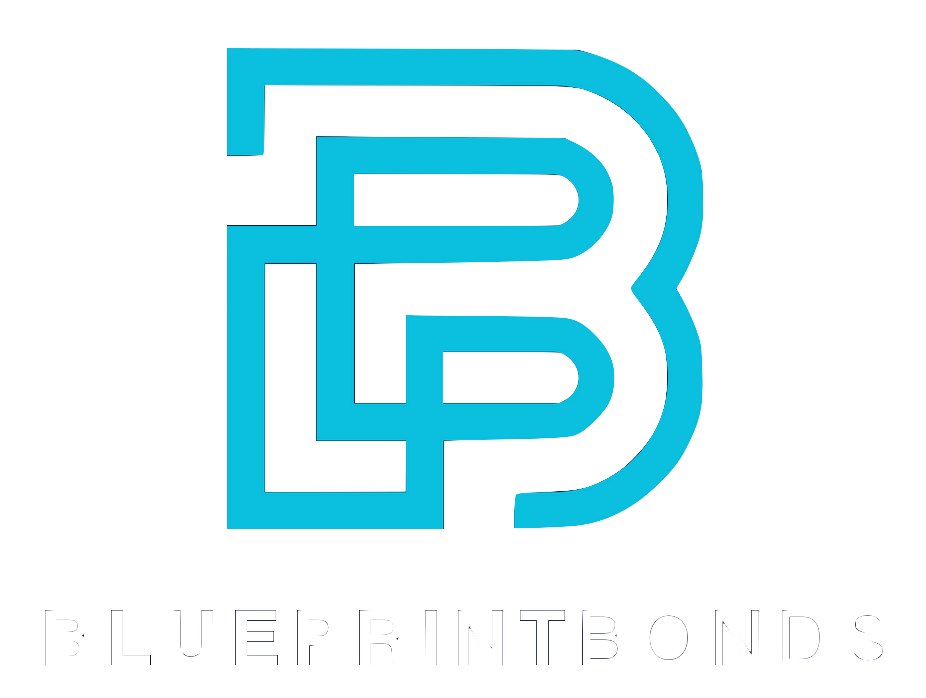Underwriters play a critical role in assessing the risk associated with financial transactions, investments, and insurance policies. One of their most important tasks is to scrutinize financial statements to identify any signs of potential fraud or misrepresentation. Detecting these red flags early can save companies and investors from significant losses and legal complications. Recent studies have shed light on the most telling indicators of financial statement fraud, emphasizing the importance of benchmarking revenue growth against industry standards.
For instance, a comprehensive study analyzing 429 confirmed cases of financial statement fraud found that auditors' use of benchmarks comparing a company's revenue growth to its industry sector is the most indicative factor of fraud risk. This insight highlights how critical it is for underwriters to look beyond internal financial data and consider broader industry trends when evaluating financial statements. More details on this study can be found at North Carolina State University’s research on financial fraud red flags.
Why Revenue Benchmarks Are Key Indicators
Revenue figures are often the centerpiece of financial statements, reflecting a company's operational success and growth trajectory. However, when these numbers appear unusually high or inconsistent with industry norms, they can signal potential manipulation. Underwriters and auditors have increasingly turned to industry revenue benchmarks as a more reliable method to detect discrepancies.
According to a 2024 study published in the Journal of Forensic Accounting Research, auditors who compare a company's revenue growth to that of its industry peers are more effective at uncovering financial statement fraud than those relying solely on internal financial comparisons. This approach helps identify outliers that might otherwise be overlooked if only internal trends are considered.
By benchmarking revenue, underwriters can spot companies reporting growth rates that are "too good to be true." This is a crucial warning sign that should prompt a more skeptical and detailed review of the financial statements. Furthermore, revenue benchmarks not only serve as a tool for fraud detection but also provide valuable insights into market positioning. By analyzing how a company stacks up against its competitors, stakeholders can better understand its relative performance and strategic advantages in the marketplace.
Moreover, the use of revenue benchmarks can facilitate more informed decision-making for investors and management alike. For instance, if a company consistently outperforms its peers, it may indicate effective management practices or innovative product offerings. Conversely, underperformance could signal underlying issues that need to be addressed, such as operational inefficiencies or shifts in consumer demand. This dynamic analysis fosters a proactive approach to financial management, encouraging companies to adapt and evolve in response to market conditions.
Common Red Flags Underwriters Monitor
Unusual Revenue Growth Patterns
One of the most obvious red flags is revenue growth that significantly outpaces industry averages without a clear business rationale. Sudden spikes in revenue, especially when unsupported by market conditions or company announcements, warrant further investigation.
Underwriters are trained to question whether such growth is sustainable or artificially inflated. This skepticism is supported by expert insights such as those from Joe Brazel, co-author of the study on financial fraud red flags, who advises that "if a company is reporting revenue that seems too good to be true, auditors should increase their fraud risk assessment and proceed with skepticism." This mindset helps prevent overlooking potentially fraudulent reporting. Additionally, underwriters often analyze the sources of revenue growth, looking for consistency in customer acquisition and retention rates. A company that claims rapid growth should ideally have a corresponding increase in customer base or market share, which can further validate the reported figures.
Inconsistent Financial Ratios
Financial ratios like gross margin, operating margin, and return on assets provide a snapshot of a company's operational efficiency and profitability. When these ratios deviate significantly from industry norms or historical trends without explanation, they can indicate manipulation.
For example, a company showing steady revenue growth but declining profit margins might be masking cost overruns or other issues. Conversely, unusually high margins compared to competitors could suggest aggressive revenue recognition or expense understatement. Underwriters often conduct a comparative analysis with peer companies to contextualize these ratios, identifying patterns that may reveal underlying issues. Such analyses can also highlight discrepancies in cost structures or pricing strategies that may not be immediately apparent, prompting deeper dives into the financial statements.
Frequent Changes in Accounting Policies
Underwriters also watch for frequent or unexplained changes in accounting policies or estimates. While some changes are legitimate responses to evolving business conditions or regulations, others may be attempts to manipulate earnings or smooth income over time.
Sudden shifts in revenue recognition methods, inventory valuation, or depreciation schedules can distort financial results and mislead stakeholders. Such changes should be scrutinized carefully to understand their impact on reported figures. Furthermore, underwriters may seek to understand the rationale behind these changes by reviewing board minutes or management discussions, as this can provide insights into whether the adjustments are strategic or merely cosmetic. The context surrounding these changes is crucial; if they coincide with significant financial events, such as a pending acquisition or a drop in stock price, it raises additional concerns about the motivations driving these alterations.
The Role of Industry Comparisons in Fraud Detection
Industry comparisons are invaluable tools for underwriters assessing the integrity of financial statements. By evaluating a company’s performance relative to its peers, underwriters can identify anomalies that might signal fraudulent activity.
Research confirms that internal comparisons alone are insufficient. The 2024 study from the Journal of Forensic Accounting Research emphasizes that auditors’ use of industry revenue benchmarks significantly enhances the detection of financial statement fraud. This approach provides context that internal data lacks, such as market dynamics, competitive pressures, and economic conditions affecting the entire sector.
For underwriters, integrating industry benchmarks into their analysis means they can better differentiate between genuine business growth and suspicious financial reporting. This method also helps prioritize cases that require deeper forensic investigation.
Moreover, industry comparisons can reveal trends that may not be immediately apparent through internal metrics alone. For instance, if a company reports a significant increase in revenue while its competitors are experiencing a downturn, this discrepancy could raise red flags. Such insights compel underwriters to scrutinize the underlying assumptions of financial projections and the methodologies used in revenue recognition, thereby fostering a more comprehensive risk assessment process.
Additionally, the use of industry comparisons can facilitate more informed discussions among stakeholders. By presenting data that contextualizes a company's performance within the broader market landscape, underwriters can engage in more meaningful dialogues with management and auditors. This collaborative approach not only enhances transparency but also encourages companies to adopt more robust financial practices, ultimately contributing to a culture of accountability within the industry.
Additional Indicators of Financial Statement Fraud
Unexplained Related Party Transactions
Transactions with related parties, such as subsidiaries or affiliated companies, can sometimes be used to manipulate financial results. Underwriters look for unusual or complex related party transactions that lack clear business purposes or fair market value.
Such transactions might be designed to inflate revenue, hide liabilities, or shift profits inappropriately. Transparency and detailed disclosures around these dealings are critical for assessing their legitimacy. For instance, if a company sells goods to a related party at inflated prices or engages in loans with favorable terms that are not available to the general market, it raises questions about the true financial health of the organization. Furthermore, the absence of independent oversight or third-party evaluations can exacerbate concerns, as it may indicate a lack of accountability in how these transactions are structured and reported.
Excessive Pressure on Management
External pressures, such as meeting analyst expectations or securing financing, can motivate management to engage in fraudulent reporting. Underwriters consider the broader corporate environment, including incentive structures and recent leadership changes, to evaluate the risk of manipulation.
Signs of excessive pressure include aggressive earnings targets, frequent restatements, or significant deviations from prior forecasts. Understanding these contextual factors helps underwriters gauge the likelihood of financial statement fraud. Additionally, the culture within the organization plays a vital role; a competitive atmosphere that rewards short-term gains over long-term sustainability can lead to unethical decision-making. Companies with a history of rapid growth or those operating in volatile industries may also be more susceptible to such pressures, as the stakes are higher and the temptation to misreport can become increasingly pronounced.
Unusual Auditor Behavior
Sometimes, the behavior of auditors themselves can be a red flag. If auditors express concerns about management’s cooperation, delay providing requested information, or issue qualified opinions, underwriters take note. These signals may indicate underlying financial reporting issues or attempts to conceal fraud.
Moreover, the relationship between the auditors and the management team can provide insight into the integrity of the financial statements. If auditors are frequently reappointed without a competitive bidding process, or if there are signs of a cozy relationship that could compromise independence, it raises further concerns. Auditors who exhibit reluctance to challenge management's assertions or who overlook discrepancies in financial reporting may inadvertently enable fraudulent activities. A thorough review of the audit trail, including the nature of communications between auditors and management, can reveal potential vulnerabilities in the financial oversight process.
Best Practices for Underwriters in Fraud Risk Assessment
Given the complexity of financial statement fraud, underwriters must adopt a comprehensive and skeptical approach to risk assessment. Leveraging both quantitative benchmarks and qualitative insights enhances their ability to detect red flags. The landscape of financial fraud is constantly evolving, making it essential for underwriters to stay informed about the latest tactics employed by fraudsters. This not only involves understanding the mechanics of fraud but also recognizing the psychological aspects that can lead individuals to commit such acts.
Key best practices include:
- Utilizing Industry Benchmarks: Regularly comparing revenue growth and profitability metrics against industry peers to identify outliers.
- Maintaining Professional Skepticism: Questioning unusually positive financial results and seeking corroborating evidence.
- Conducting Thorough Due Diligence: Investigating accounting policy changes, related party transactions, and auditor reports in detail.
- Monitoring Market and Economic Trends: Understanding external factors that could impact financial performance and reporting.
In addition to these practices, underwriters should also consider implementing advanced data analytics tools that can sift through large volumes of financial data to identify patterns indicative of fraud. These tools can analyze historical data to detect anomalies that may not be immediately apparent through traditional methods. Furthermore, fostering a culture of transparency within organizations can encourage employees to report suspicious activities without fear of retaliation, thereby enhancing the overall fraud detection framework.
Moreover, collaboration with forensic accountants and fraud examiners can provide underwriters with deeper insights into complex financial transactions. This partnership can be invaluable, especially when dealing with intricate cases involving multiple entities or jurisdictions. By integrating these specialized skills into their assessment processes, underwriters can significantly improve their ability to identify and mitigate fraud risks, ultimately safeguarding their organizations and clients from potential financial losses.
Conclusion: Vigilance Is Vital in Financial Statement Review
Financial statement fraud remains a significant threat to the integrity of financial markets and the security of investments. For underwriters, recognizing red flags such as unusual revenue growth patterns, inconsistent financial ratios, and reliance on industry benchmarks is essential.
Recent research, including the North Carolina State University study analyzing 429 fraud cases, underscores the effectiveness of using industry revenue benchmarks in fraud detection. This approach, combined with professional skepticism and comprehensive due diligence, equips underwriters to identify and mitigate fraud risks effectively.
Ultimately, vigilance and a methodical review process are the best defenses against financial misrepresentation, helping to ensure transparency, trust, and stability in financial transactions.




